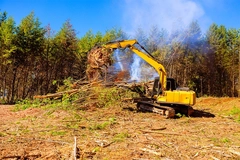
- Industry news
Industry news
- Category news
Category news
- Reports
- Key trends
- Multimedia
- Journal
- Events
- Suppliers
- Home
- Industry news
Industry news
- Category news
Category news
- Reports
- Key trends
- Multimedia
- Events
- Suppliers
KEY INTERVIEW: Enzyme Sets New Standard In Starch Processing

15 Jun 2015 --- With promises of chemical, water, energy and cash savings, Novozymes launched LpHera in February 2014, aiming to change the way starch processors consider liquefaction. 14 months later and the company report implementation by many of the industry’s largest players. FoodIngredientsFirst spoke to Novozymes Marketing Director Frederik Mejlby about the company’s most recent development.
Starch is the energy source of plants and can be found in cereals, tubers, roots and other plants. Globally, approximately 60 million tons of starch is converted into sweeteners and ingredients per year, and these are used in a wide variety of popular consumer food products, including confectionery, soft drinks, sauces and canned fruits. The starch industry is one of the longest-standing markets for enzymes.

There are four basic steps involved – separation, liquefaction, saccharification and isomerization. Separation is the first stage where the raw material, often corn, is milled to separate the starch from the oil, protein and fibers. Enzymes ease this process and the starch is usually present in a water slurry which is passed on to the next stage, known as liquefaction. This is where the enzyme breaks down the large starch molecules into smaller ones called maltodextrins. In the third stage, saccharification, enzymes break the maltodextrins into even smaller glucose molecules. During the fourth stage, isomerization, the glucose is converted into fructose which in turn enables the production of high fructose syrup and crystalline fructose used commonly in the food and beverage industries.
Starch production relies on enzymes during processing, and alpha amylases used in liquefaction. Although biotechnology companies have improved their alpha amylases during the past 40 years, the chemically intense liquefaction process remained largely the same.
Traditionally, liquefaction takes place at pH 5.5-5.8, and chemicals are used to raise pH levels before liquefaction and again at the end of the process to ensure the lower pH necessary for the next step in starch processing, saccharification. LpHera brings the liquefaction pH level as low as 4.5-4.8, which reduces the need for the pH chemicals by 50-60% before and after liquefaction.
“LpHera breaks conventions and simplifies the process,” says Mejlby. “I can’t imagine any customer returning to the old way of liquefaction after trying LpHera. Every sweetener plant in North America that commercially trialed LpHera has actually since implemented it. And just last week, we received a supplier’s innovation award because of LpHera. We were excited by the results of our commercial-scale tests before launch, but the fact that our customers really love the product is even better.”
“Starch processors are halving the amount of pH chemicals needed for liquefaction with LpHera. Less chemicals added means less chemicals to remove in the ion exchange operation. The ion exchange columns can run 10-15% longer before regeneration is needed, and this reduces the need for regeneration chemicals. So there are significant chemical savings with LpHera savings,” says Mejlby.
LpHera is also designed to break down starch in a way that creates more dextrose when compared to the conventional enzymes used during this process stage. As a result, the level of dry substance may increase, leading to savings in steam, water and energy for evaporation.
“We’re estimating that LpHera can save a starch processor up to 1 to 1.2 USD per metric ton of substrate,” says Mejlby.
Starch plants vary in size and can process from 0.2 to over 1 million ton of substrate each year. Based on Novozymes’ estimates, if a plant process 0.5 million ton of substrate, they can save up to 600.000 dollars per year using LpHera.
By Kelly Worgan










